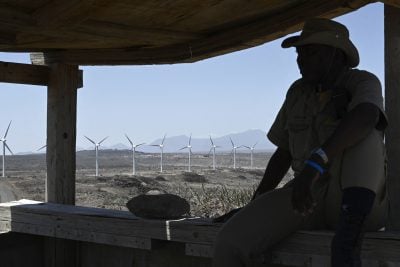Namibia
Namibian production rose 38% from 3,258tU in 2011 to 4,495tU in 2012. The Rössing mine in Namibia is the third largest in the world, 69% owned by Rio Tinto with 15% interestingly being owned by the Iranian Foreign Investment Company, with the stake held in trust by the Namibia government as a result of international sanctions on Iran. The mine has been losing money and had to let 18% of its staff go in March.
With 2,306 tonnes of uranium oxide produced in 2012, Africa-focused uranium miner Paladin Energy-owned Langer Heinrich is the second-largest uranium mine in Namibia, after Rössing. Production rose 20% in the last year and costs fell 9% to $29.4/lb. When the mine is operating at capacity, it will double the country’s output and could move Namibia past Niger into third place in the uranium production stakes. July saw strikes over health and safety, and employment condition concerns.
Production at Trekkopje, which had only commenced last year, will be suspended by the end of the year as the mine is mothballed due to current market conditions. It produced 251tU last year and is owned by Areva and United Africa Group. Chinese-owned Taurus Minerals owns the country’s vast and promising Husab project that could produce 5,700tU by 2017.
Niger
Nigerien production rose 7% from 4,351 tU in 2011 to 4,667tU in 2012. The world’s fifth-largest uranium mine, Arlit in Niger, is owned by French giant Areva – as are three of four major projects in the country.
France produces 75% of its energy using nuclear power, by the far the greatest proportion of any country. Securing supplies is a vital national interest, a fact the country’s enemies are aware of. Four Areva employees were kidnapped in September 2010 from Arlit and remain missing. Additionally, May 2013 saw a suicide bombing attack on the site that interrupted production for a month or so.
Another of the potential great uranium mines of the future, Imouraren, is 57% owned by Areva, and expected to come online in mid 2015. This mine has the potential to double the country’s output and make it the second-biggest uranium mining country after Kazakhstan.
Elsewhere
There are uranium prospects elsewhere in the continent too. Some exploration rights in Zambia changed hands recently. In Malawi, Paladin’s Kayelekera mine saw production rise 30% from 846tU to 1,101tU – 10 times the output since its full year of production back in 2009.
At this rate of growth, Malawi will soon overtake China in terms of uranium production. Paladin Energy has been struggling of late. Its shares had been trading above $5 pre-Fukushima (which even then was half the $10 level seen in 2007) but are now below $0.5. The company is having some success slashing costs and is seeking to sell its Namibian project, or a stake in it, to reduce its $750m debt. For the braver investor, the company offers excellent upside in the event of higher uranium prices.
Meanwhile South African output fell 20% to 465tU. South Africa is currently the only African nation that utilises nuclear energy, with the Koeberg nuclear plant producing about 5% of its electricity. Capacity, according to the draft Integrated Electricity Resource Plan, is due to rise from 1.8GWe by a further 9.6GWe by 2030.
Australia’s Mantra Resources has announced it has located 176mt of uranium reserves, more than previously thought, at the Mkuju River. ARMZ/Uranium One have a stake in the project and are assisting with financing and operations. The uranium mined will be processed into yellow cake domestically.
The Acting Commissioner for Minerals, Eng. Ally Samaje told reporters in Dar es Salaam its extraction will yield some $600m in taxes. Many suggest a price of around $70/lb is said to be necessary for the industry to be able to thrive and allow it to develop new projects. If prices continue to remain low for a sustained period, expect a sharp rebound as a bottleneck forms in the months and years ahead.
Want to continue reading? Subscribe today.
You've read all your free articles for this month! Subscribe now to enjoy full access to our content.
Digital Monthly
£8.00 / month
Receive full unlimited access to our articles, opinions, podcasts and more.
Digital Yearly
£70.00 / year
Our best value offer - save £26 and gain access to all of our digital content for an entire year!
 Sign in with Google
Sign in with Google 


